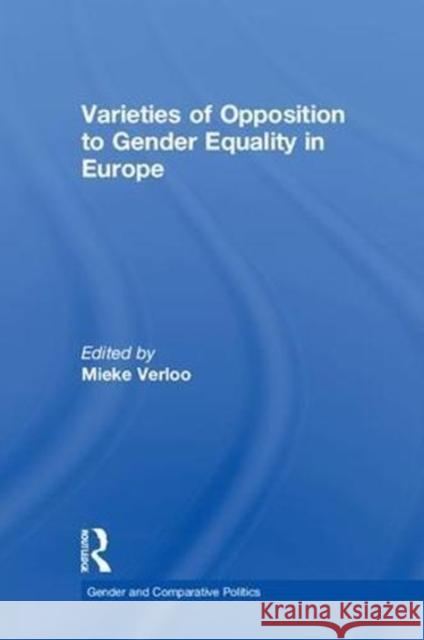Varieties of Opposition to Gender Equality in Europe » książka
Varieties of Opposition to Gender Equality in Europe
ISBN-13: 9781138649606 / Angielski / Twarda / 2018 / 238 str.
Varieties of Opposition to Gender Equality in Europe
ISBN-13: 9781138649606 / Angielski / Twarda / 2018 / 238 str.
(netto: 670,84 VAT: 5%)
Najniższa cena z 30 dni: 654,86
ok. 22 dni roboczych
Dostawa w 2026 r.
Darmowa dostawa!
In contrast to the wealth of studies on progress towards gender equality, opposition to gender equality is rarely studied, which makes it difficult to understand the positive and negative dynamics of gender equality as a political project. Opposition to gender equality comes in many forms. It can be direct and extremely visible, like when Swedish feminists receive online death threats or like in France, where in 2014 thousands demonstrated against 'gender theory' and school programs tackling sex and gender stereotypes. It can be ongoing, as in opposition to legal abortion. At times it is indirect and less visible, as when successful UK shelters for victims of domestic violence are wiped out by outsourcing to non-expert commercial actors. Opposition can take the form of opposing particular visions of gender equality--based on understandings of gender equality that are narrow (sex-only) or broader (intersectional, interwoven with race, class and other inequalities)--or particular strategies to achieve gender equality, such as quota in politics. Such visions and strategies of gender equality have all led to heavy contestations and splits in feminist organizations. And oppositional actors can thus be experts or ordinary citizens, formal or informal political actors, feminists and non-feminists. The first of its kind, this timely collection examines the potential and challenges of our current gender and politics scholarship for understanding opposition to gender+ equality in Europe. Conveniently divided into three parts, Mieke Verloo and her team of international experts begin by theorizing the dynamics of opposition to gender equality policies in Europe. Part Two highlights different oppositional actors (politicians, governments, citizens, policy makers, churches), different political arenas (parliament, courts, internet) as well as different visions of gender+ equality that are opposed to, different mechanisms of oppositional dynamics (actor based, discursive, material) with a special attention for the interaction between gender and sexuality. Part Three concludes with a framework for understanding oppositional dynamics on gender quality change and suggests possible actions against opposition. Politically, this book contributes to knowledge that can be used to counteract such oppositions. Scientifically, it presents a much needed theoretical framework explaining why, where and who opposes gender+ equality, and its chances for success or failure as a political or policy goal. Setting the agenda for the future research on opposition to gender+ equality in Europe, this book will be useful for students of gender and politics, social movements, European integration and policy studies as well as for high-level policymakers, students and feminist activists alike. Overall, it will be an inspiration to thinkers and doers alike.











